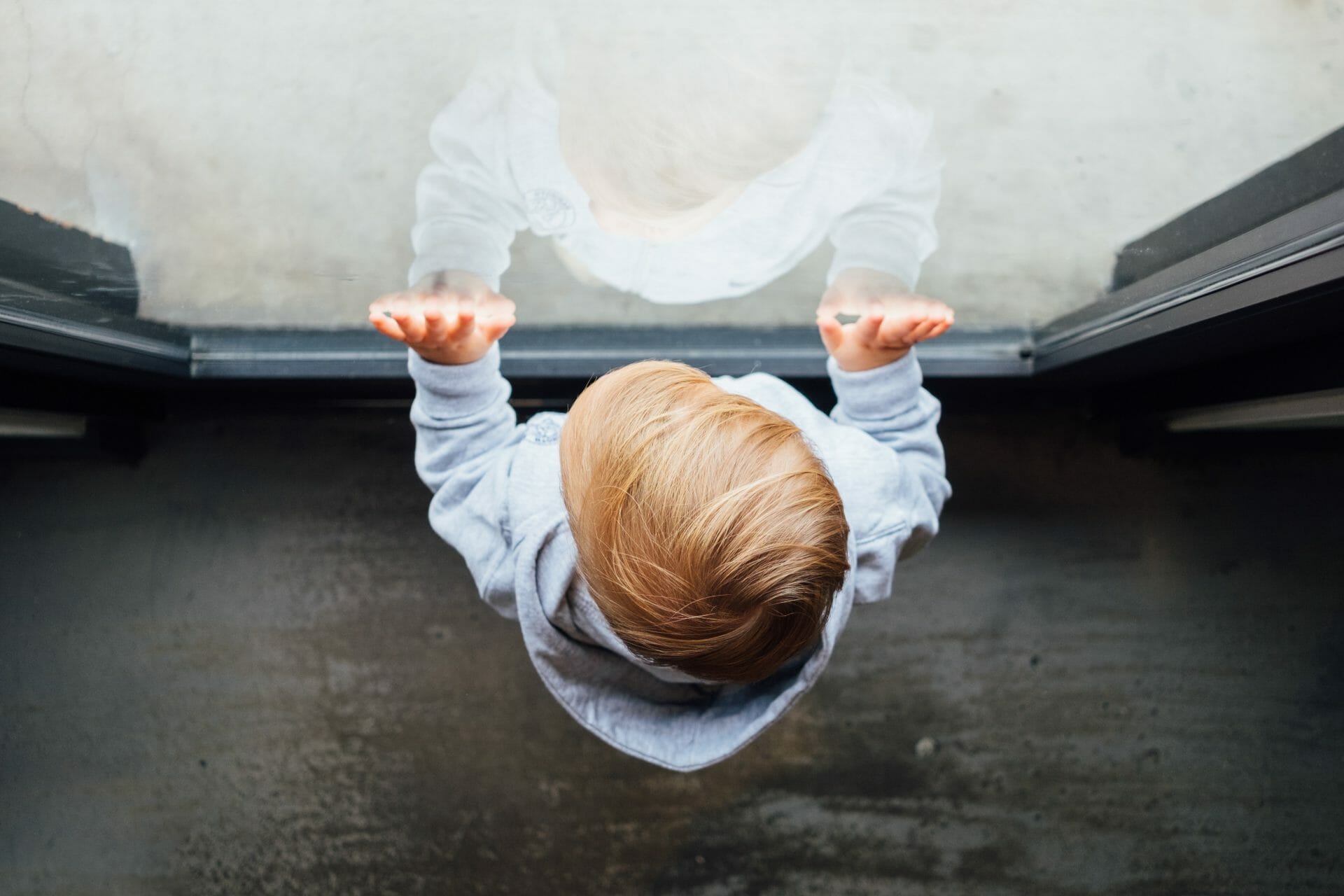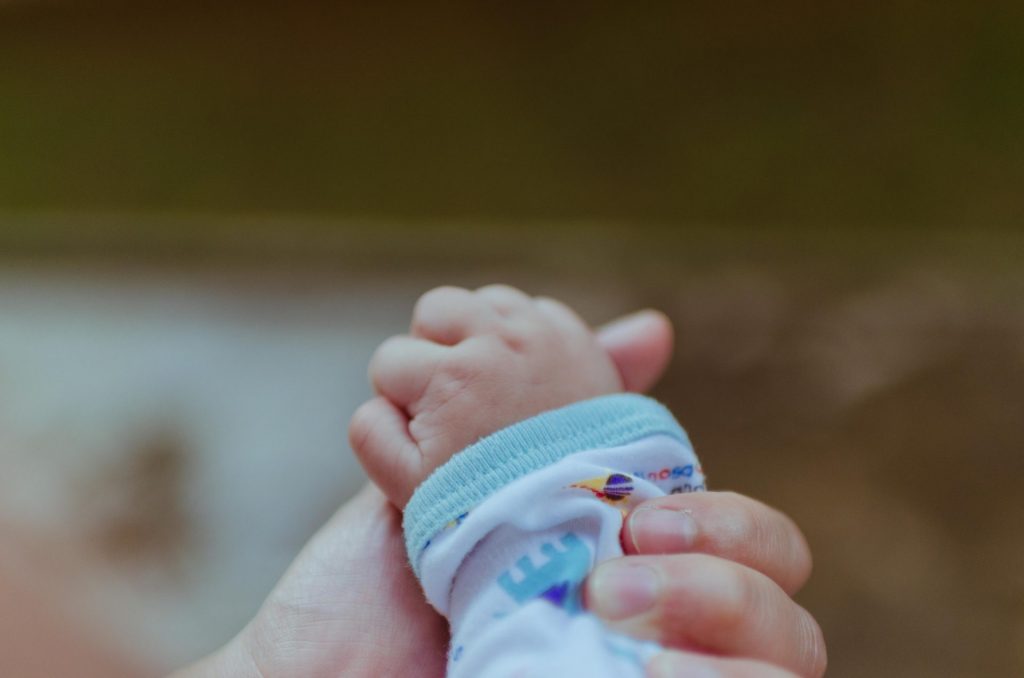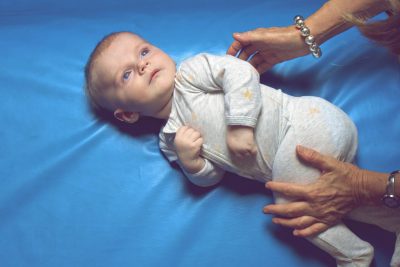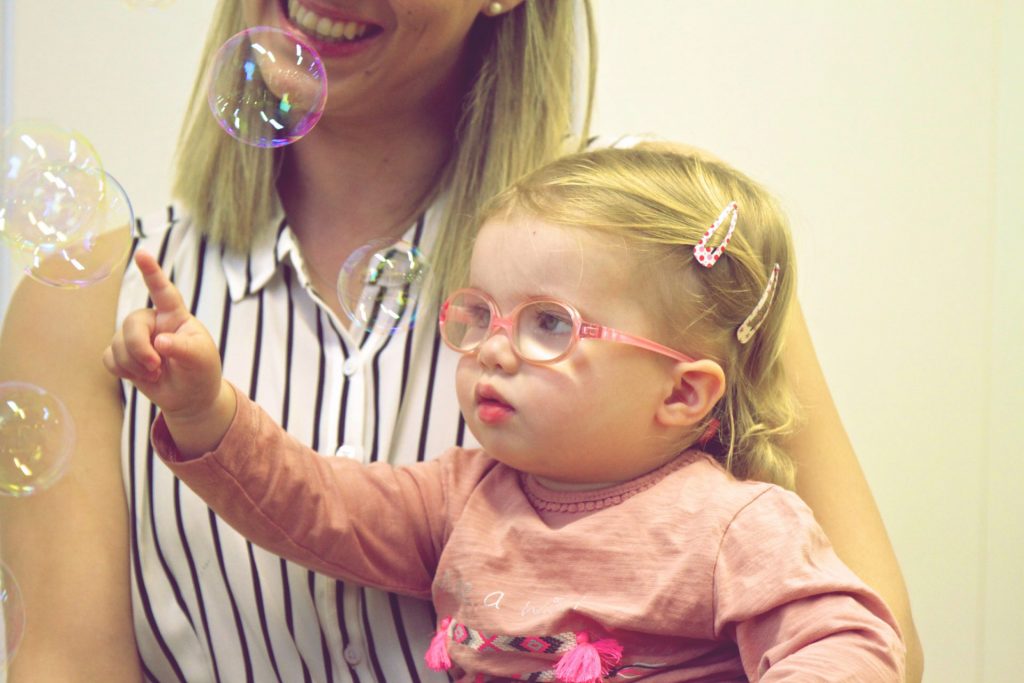The systems that work together to allow this to happen are:
- Vision – the use of eyes to stabilise the body in an upright position (vision account for 10% of sensory system required for balance.)
- Proprioception – this is information the body gathers from the ligaments, muscles, and joints of the baby’s body and is used by the brain to adjust the body to stay upright (70% of info needed).
- Vestibular system – system for posture and balance located in the ears (accounts for 20% of info needed).
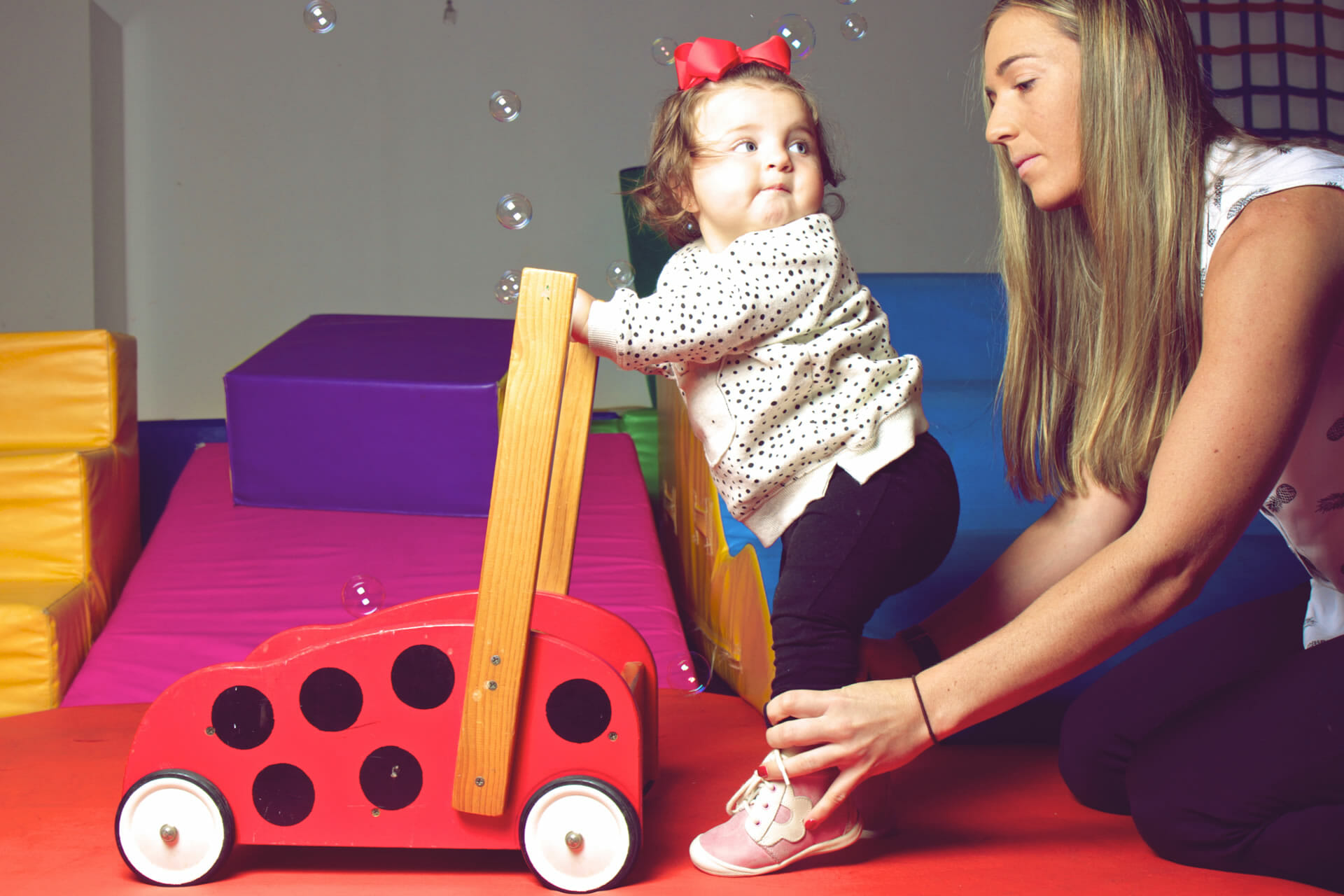
Motor development needed to stand independently requires:
- Motor coordination: This is the ability to control a number of different muscles at once so that they can act together (e.g. hip/tummy and back muscles all work together to keep a baby’s trunk upright in standing).
- Muscle and ligament strength and joint stability: Babies need to develop strength and length in their muscles to allow them to stabilise their joints for standing (e.g. the muscles and ligaments of the ankle allow a baby to control their foot position in standing).
- Postural reactions: These are the motor and sensory reactions a baby develops in the first year of life to allow the development of functional gross motor skills (e.g. standing and walking). They include reflexes – the automatic movement of babies usually initiated by sensory stimulation. We see a standing reflex in babies in just the first few weeks.
- Righting reactions: This supports the vertical head position and alignment of head and trunk.
- Equilibrium reactions: Move xxx allows the baby to balance when their centre of gravity is challenged.
- Protective reactions: Reactions of hands and feet to prevent injury if the baby can’t maintain their balance.
Cognitive/Social Development
For babies to stand independently they need the desire to be upright to solve problems (e.g. how to use furniture to get up to get a toy out of reach). They also need the confidence to take a risk and plan how to achieve the position. This comes together with the development of their motor and sensory skills.
Motor development of standing 0-12 months
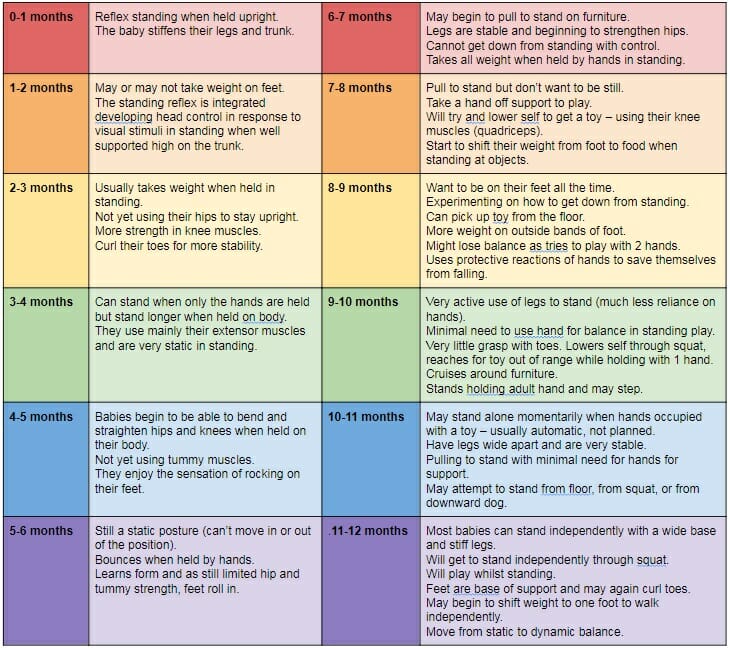
Ways to help develop independent standing:
- From birth put your baby on their feet.
- As they develop strength in their legs by 6 months start to hold their hands in standing.
- Put toys up once they are beginning to pull to stand.
- Put them on their feet to play at the couch by 6-7 months (while ensuring you are there to hold as needed).
- Give them lots of different surfaces to stand on to allow them to develop balance reactions.
- Play lots of games/songs in standing.
- Tip them side to side in standing from 3-6 months to develop head righting reactions.
- Encourage them to reach with one hand in all directions from 8-10 months.
- Help them get from squatting to standing with hands held.
- Encourage play with 2 hands in standing as their balance develops while you hold at their hips.
- Don’t use containers to stand in.
- Tip them forward and back holding at hands from 8 months.
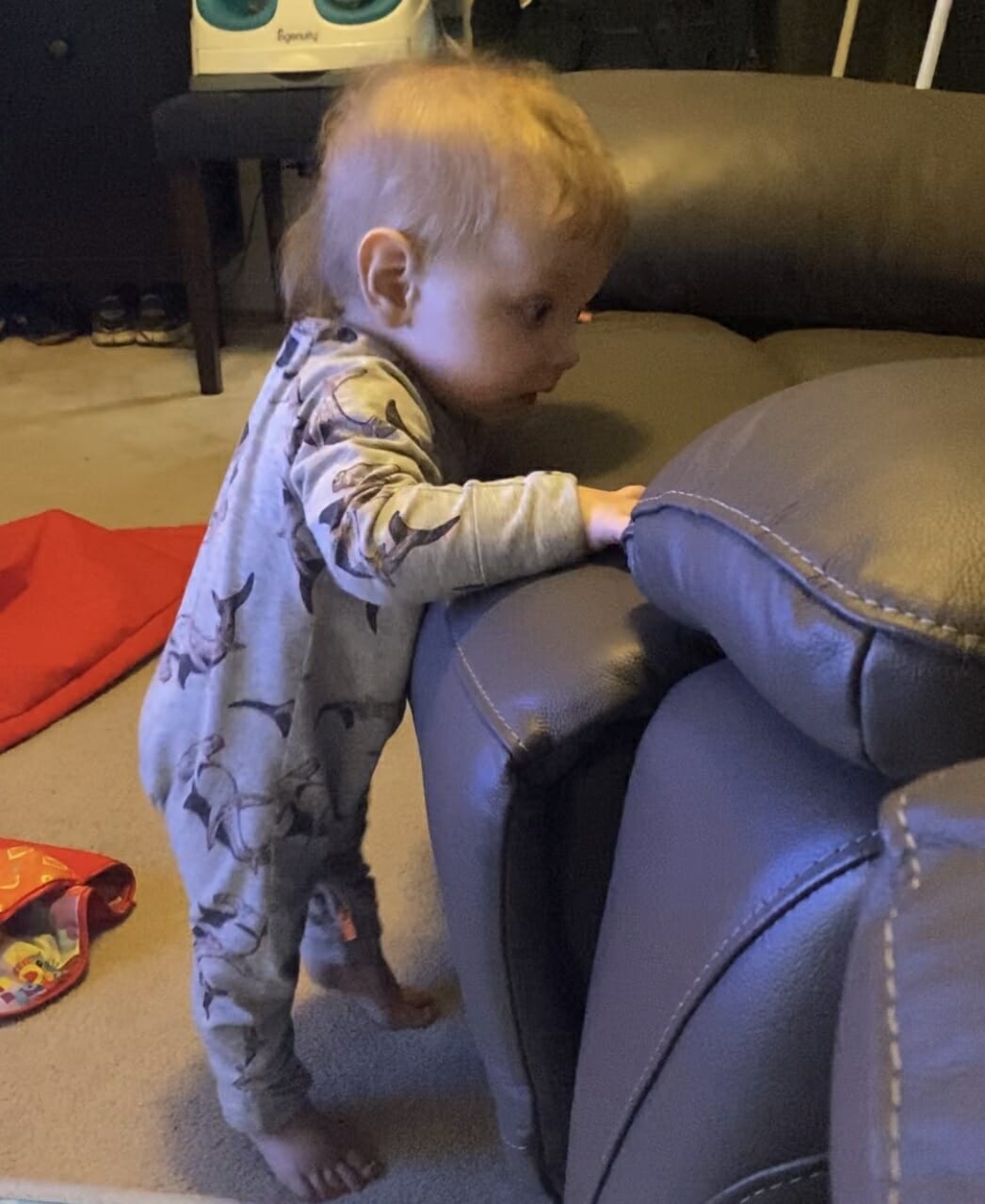
Ways to keep your baby safe in learning to stand:
- Provide soft furniture to pull to stand on.
- Watch them if standing on hard surfaces.
- Provide soft surfaces to stand on (e.g. carpet or use foam mats).
- Show them how to fall onto their hands by playing games with them.
